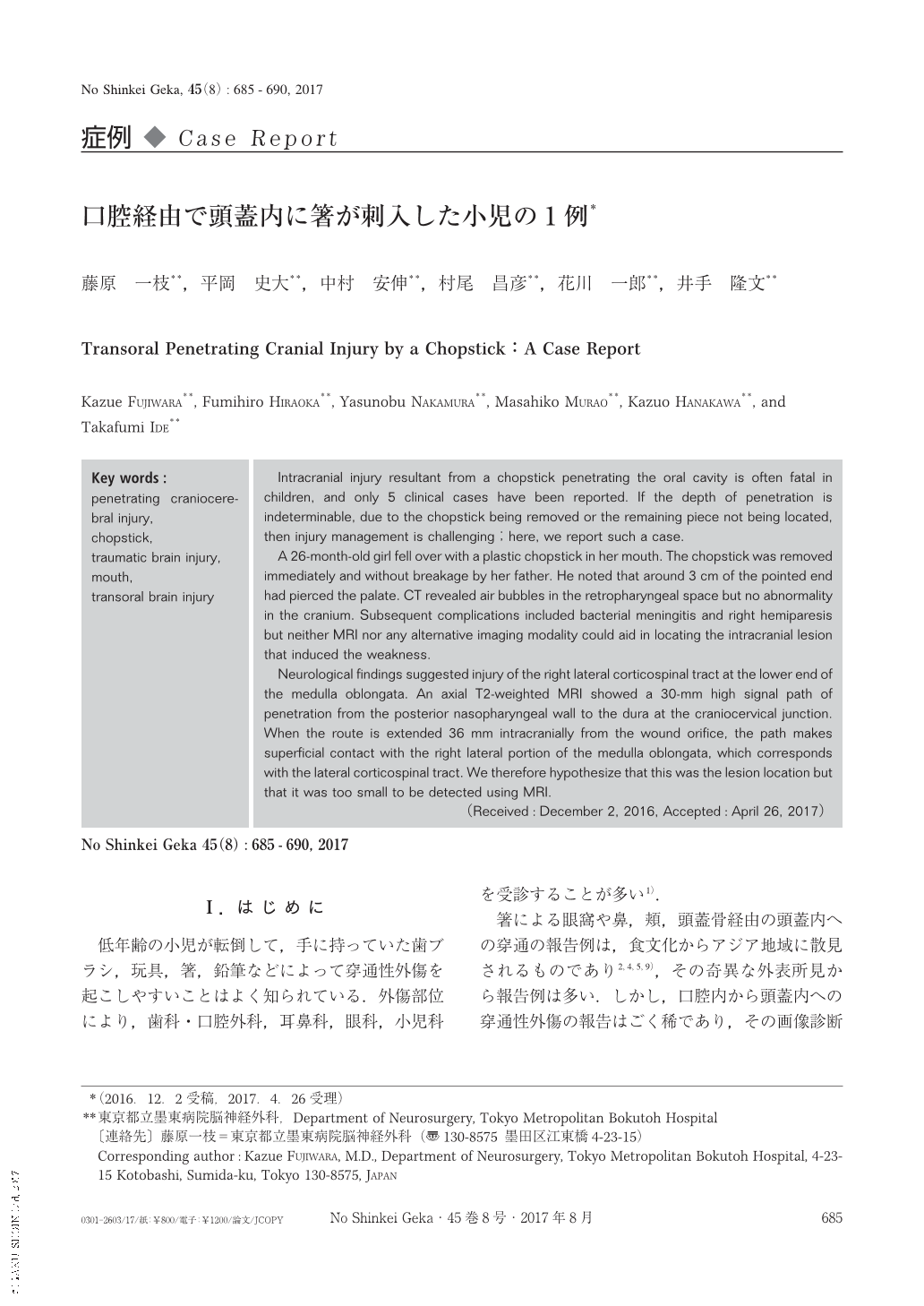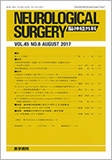Japanese
English
- 有料閲覧
- Abstract 文献概要
- 1ページ目 Look Inside
- 参考文献 Reference
Ⅰ.はじめに
低年齢の小児が転倒して,手に持っていた歯ブラシ,玩具,箸,鉛筆などによって穿通性外傷を起こしやすいことはよく知られている.外傷部位により,歯科・口腔外科,耳鼻科,眼科,小児科を受診することが多い1).
箸による眼窩や鼻,頬,頭蓋骨経由の頭蓋内への穿通の報告例は,食文化からアジア地域に散見されるものであり2,4,5,9),その奇異な外表所見から報告例は多い.しかし,口腔内から頭蓋内への穿通性外傷の報告はごく稀であり,その画像診断や治療過程も周知されていない.なかでも,既に箸を抜去した状態で来院した例で,頭蓋内病変を予見し,対処することは困難である.今回われわれは,口腔経由で頭蓋内に箸が刺入した小児の1例を経験したので,報告する.
Intracranial injury resultant from a chopstick penetrating the oral cavity is often fatal in children, and only 5 clinical cases have been reported. If the depth of penetration is indeterminable, due to the chopstick being removed or the remaining piece not being located, then injury management is challenging;here, we report such a case.
A 26-month-old girl fell over with a plastic chopstick in her mouth. The chopstick was removed immediately and without breakage by her father. He noted that around 3 cm of the pointed end had pierced the palate. CT revealed air bubbles in the retropharyngeal space but no abnormality in the cranium. Subsequent complications included bacterial meningitis and right hemiparesis but neither MRI nor any alternative imaging modality could aid in locating the intracranial lesion that induced the weakness.
Neurological findings suggested injury of the right lateral corticospinal tract at the lower end of the medulla oblongata. An axial T2-weighted MRI showed a 30-mm high signal path of penetration from the posterior nasopharyngeal wall to the dura at the craniocervical junction. When the route is extended 36 mm intracranially from the wound orifice, the path makes superficial contact with the right lateral portion of the medulla oblongata, which corresponds with the lateral corticospinal tract. We therefore hypothesize that this was the lesion location but that it was too small to be detected using MRI.

Copyright © 2017, Igaku-Shoin Ltd. All rights reserved.


